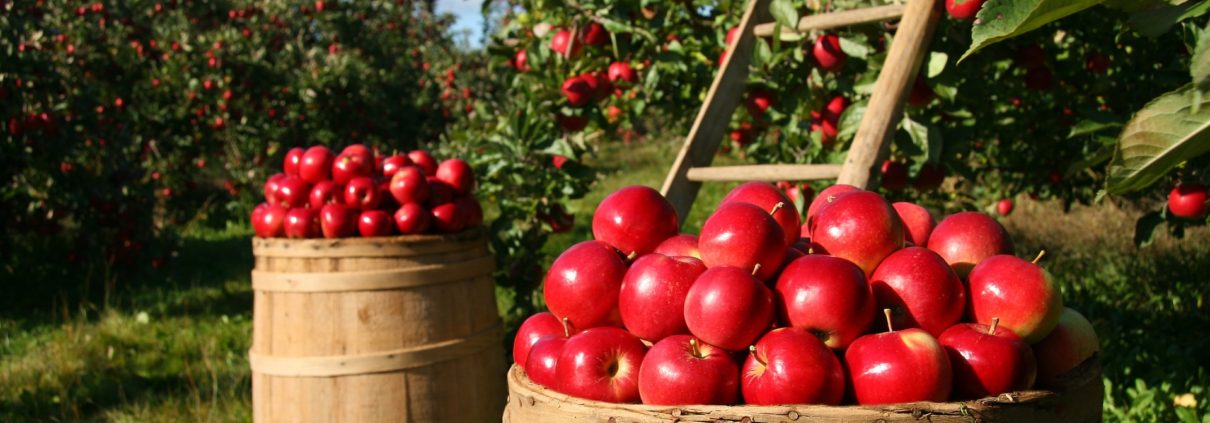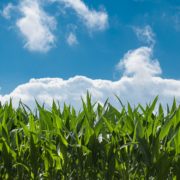How to Start an Orchard
Many people think that summer is the best time to appreciate land, but orchard owners know that fall is when land is really in its prime. The leaves are changing color, fall treats are cooking in the oven, and everyone is in the mood for a big mug of warm apple cider.
Since October is an orchard’s time to shine, we thought we’d look into what makes a successful apple orchard.
Choosing Your Land
For an orchard to succeed, it needs to have a strong foundation to grow on. You’ll want to find a property with plenty of sunlight and well-drained soil. Different varieties of apples thrive in different climates, so you’ll need to make sure your trees and your property’s location are a good match.
The USDA’s Plant Hardiness Zone Map is a great way to gauge which types of trees would thrive in your location.
Soil drainage is also incredibly important. Be sure to get a soil test done or check out the USDA’s Web Soil Survey to make sure your property’s soil type is the best kind for your trees to flourish.

The best landscape for your orchard will also depend on the type of apples you plan to grow. If you grow apples that need more sunlight in the fall, you’ll want to plant them on a northern-facing slope. If you grow apples that need more sunlight in the spring, its best practice to plant them on a southern-facing slope.
A rolling landscape protects land from harsh wind. Too much exposure to strong winds isn’t good for any crop, but despite their sturdy looks apple trees are especially sensitive to the effects of wind. To prevent the delicate branches of your trees from snapping and the fruit from bruising, make sure your trees have decent protection from strong winds.
Finding the perfect property for an orchard can be tricky. Land transactions require specialized expertise, so Find A Land Consultant in your area before investing in this unique type of property this fall.
Choosing Your Apples
In America, there are currently 2,500 varieties of apples grown, each with their own unique flavor, colors, and needs. Here are some best sellers, according to the US Apple Association:
- This New England favorite grows best in cool areas. Its tart flavor makes it perfect for cooking fall treats.
- Originally developed in Japan, the Fuji apple is sweet and crisp. They also have a very long shelf life, sometimes lasting up to a full year with refrigeration.
- Red Delicious. This American classic thrives in warmer climates. Although this type of apple has a surprising amount of online hate, it is still projected to be one of the top sellers for 2018.
- Pink Lady®. A sweet, sharp taste with a lovely blush color. But be warned – this type is susceptible to fireblight and cedar apple rust.
- These apples have a mild, honeyed flavor that is great for baking or dipping in caramel.
To learn about other types of apples, check out Orange Pippin. They have detailed descriptions of hundreds of apple types.

Tips For Planting/Caring for Your Orchard
- Planting three varieties of apple types is the best way to get great pollination. Like people, bees are important to land real estate as an industry and its important to know they like variety in their food. Offering them a few different types of apple blossoms will keep the bees coming back to your orchard time and again.
- Patience is important when growing trees. It can take anywhere from two to seven years for trees to turn a profit. Much like timberland, orchards take a while to make money.
- Orchards do require upkeep. You’ll need to prune them in spring to get rid of dead wood.
- Orchards are also especially susceptible to pests, so set aside some money for pest control.
If you have the time, patience, and love of land required to grow an orchard, it might be a great addition to your property. There are thousands of different apple varieties to choose from, so channel your inner Johnny Appleseed and getting planting! Thinking about purchasing an orchard or starting one of your own? Make sure to find a land expert using the Find A Land Consultant search tool. Land transactions and investments require an agent with specialized expertise and experience in the field.
About the Author: Laura Barker is a freelance writer based out of California for the REALTORS® Land Institute. She has been with RLI since October 2017.
is a freelance writer based out of California for the REALTORS® Land Institute. She has been with RLI since October 2017.





Trackbacks & Pingbacks
[…] matter. People who want to start orchards, for instance, need to pay close attention to whether sloped land faces north or south. When growing apples during autumn, you want trees to grow on a northern-facing slope if possible. […]
Comments are closed.